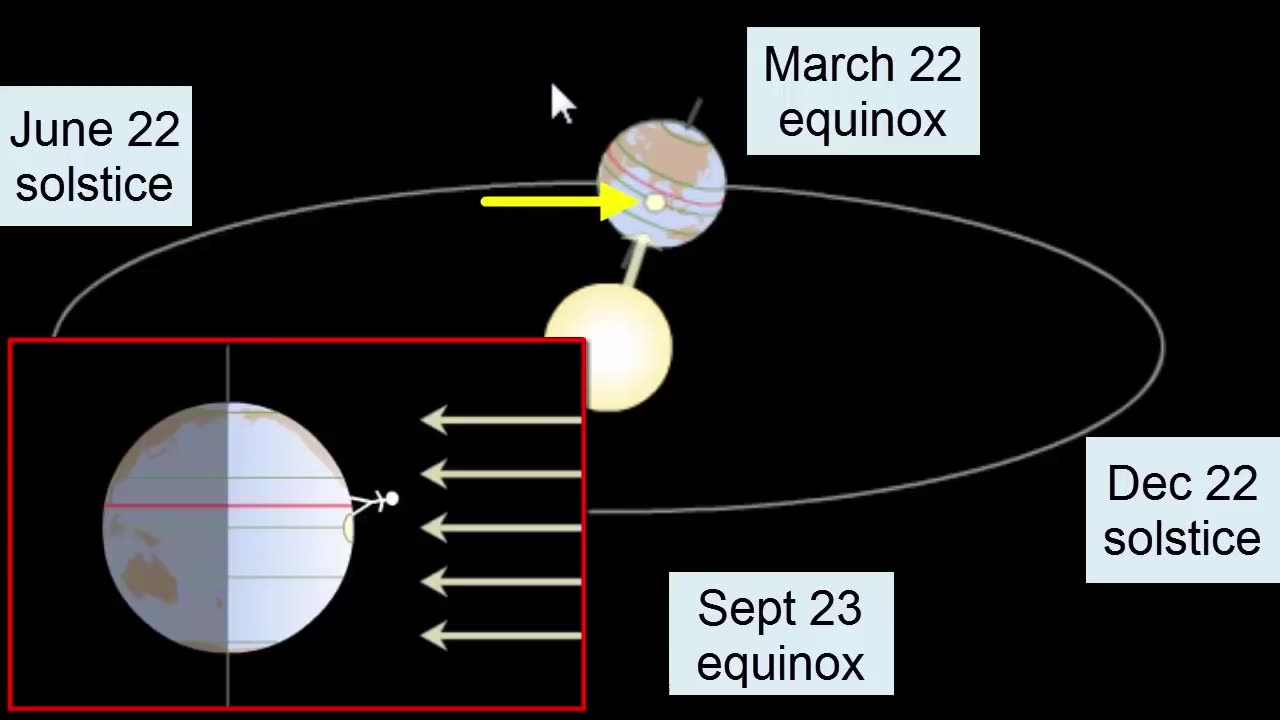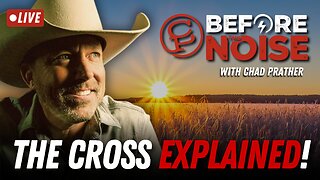Premium Only Content

Review of the causes of the seasons in the northern and southern hemispheres and impacts of Earth's seasons on daily light cycles and heat input. Includes descriptions of solstices and equinoxes. Designed for an introductory oceanography course at City College of San Francisco.
**This video comes in the middle of the semester, so there may be terms with which the audience is unfamiliar. For a full playlist, refer to the Oceanography playlist on the Earth Rocks! YouTube Channel.
Air-Sea Interactions Series:
Part I: Seasons
Part II: Relative Humidity
Part III: Atmospheric Gases, Heats, and Pressures
Part IV: Atmospheric Circulation
Part V: Weather Phenomena
If you are an earth science enthusiast and would like to support our ongoing video development and engage with us behind the scenes...
Or if you are a student and would like access to interactive lessons built around these videos...
you can do so by JOINING the Earth Rocks! YouTube Channel:
/ @earthrocks .
Thank you!
Additional notes:
The images in this video are not drawn to scale, because to do so, we couldn't see the Earth and Sun in the same image. The Sun is actually 109 times greater in width (diameter) than the Earth. That means that when they were drawn next to each other, the Earth would be 1/109th the height of the Sun. We wouldn't see it on the screen.
The distance between the Earth and the Sun is actually about 23,400 times the Earth's diameter. That means that when drawn next to each other as shown in the top image of the video, the Earth would actually appear smaller than a pin hole (you'd need to line up 23,400 of them next to each other to reach the Sun).
Earth rotates around its own axis once every 23 hours and 56 minutes. It takes another 4 minutes more rotation to face the Sun again. So when we talk about a day = 24 hours, we are really saying the time it takes to return us to facing the Sun. (Technically called a "solar day.") Multiply 4 minutes per day by 1/2 a year and you get about 12 hours. By the time we get to the other side of Earth's orbit, we are about 12 hours rotated from where we were on the other side. The result is that noon always ends up with us almost directly under the Sun depending on where you live in a time zone. We don't notice this 12-hour rotation unless we look at the stars in the sky (the "fixed objects" against which we can see our motion). That's why we see different constellations at night depending on the time of the year.
-
 LIVE
LIVE
Steven Crowder
1 hour agoMamdani's Anti-White Victory Must Be America's Wake Up Call
4,631 watching -
 LIVE
LIVE
VINCE
2 hours agoPelosi Is Passing The Torch - Who's Next? | Episode 164 - 11/07/25 VINCE
31,104 watching -
 1:42:21
1:42:21
Graham Allen
2 hours agoPARTY AT WAR!! We Need to Get It Together Or We Lose 2028…
83.8K51 -
 1:06:37
1:06:37
Chad Prather
14 hours agoApplying The POWER Of Christ To Your Life!
58.8K22 -
 LIVE
LIVE
LFA TV
13 hours agoLIVE & BREAKING NEWS! | FRIDAY 11/7/25
2,975 watching -
 1:05:59
1:05:59
Crypto Power Hour
14 hours ago $0.14 earnedTop 10 Cryptocurrency Staking Platforms
48.1K10 -
 35:53
35:53
Mike Rowe
1 day agoBreaking Down Bill Gates' 3 Tough Truths About Climate | Alex Epstein #457 | The Way I Heard It
69.5K51 -
 23:22
23:22
Stephen Gardner
1 day ago🚨BREAKING: Mamdani Won and What Trump EXPOSES About It is SHOCKING!!
49.6K140 -
 1:16:41
1:16:41
Steve-O's Wild Ride! Podcast
21 hours ago $0.06 earnedAdam Ray Absolutely Kills Steve-O | Wild Ride #273
39K5 -
 37:22
37:22
efenigson
1 day agoWhat COVID Taught Me About Money & Control - Efrat Fenigson | Ep. 104
30.9K4